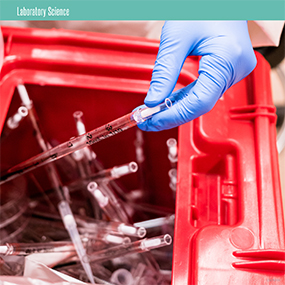NCEZID Innovations: Laboratory Science
Safely Disposing of Biohazardous Waste
Problem
Leaky bags is never a problem you want when handling biohazardous waste. Disposing of waste that contains infectious materials must be done with utmost caution. Biohazardous waste disposal is a far-reaching issue, affecting laboratories and hospitals that regularly decontaminate biohazardous waste. Autoclaving, the method most commonly used to inactivate infectious substances before the waste is sent to a landfill, uses heat, steam, and pressure to kill organisms that can cause diseases. The effectiveness, however, varies depending on the type of autoclave, the material involved, the containers used, and other factors. Closing autoclave bags too tightly, for example, can cause pressure to build up and bags may explode. Preparing waste properly is vital to effective decontamination.
Innovation
In 2017, a team of NCEZID experts researched ways to improve laboratory waste management practices. They spent countless hours investigating how to improve the autoclave process. For example, they found that it is not necessary to add water to autoclave pans or bags for decontamination, and now insert a plastic pipe as the bag is closed, to leave a standardized opening for steam to pass through. These and other improvements reduce the chance of waste exposure. Experts used results of this research to inform autoclave safety training for laboratorians and to update procedures for disposing of soft waste versus hard waste, labeling waste, and more. There are plans for this research to be published to help laboratories reduce the risk of exposure to infectious waste for their employees and the greater community.

Download printable PDF version: Innovations to Stop Emerging and Zoonotic Infections [32 pages]
Bottom Line Up Front:
CDC experts found ways to decrease the risk of exposing lab workers and the community to biohazardous waste.
- Page last reviewed: November 22, 2017
- Page last updated: November 22, 2017
- Content source:
Centers for Disease Control and Prevention
National Center for Emerging and Zoonotic Infectious Diseases (NCEZID)


 ShareCompartir
ShareCompartir